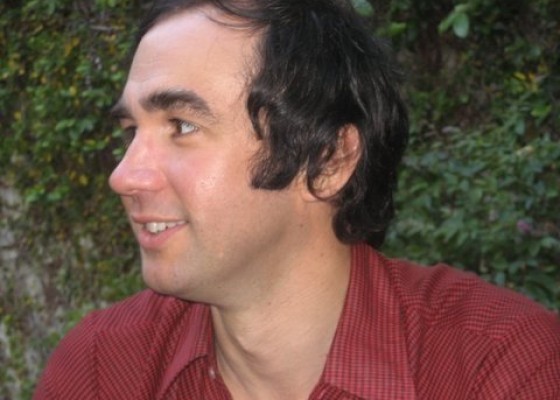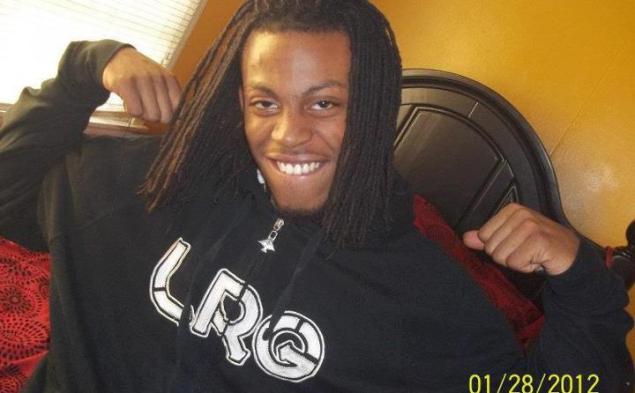Whenever a person commits suicide, it’s not uncommon for friends and family to formulate theories about them being the victims of foul play. Sometimes they do this because they simply cannot accept that their loved one made the conscious decision end their own life, so they need to find answers in order to alleviate their grief.
However, in some cases, their suspicions may actually be justified. Here are some questionable deaths which – possibly due to corrupt or incompetent law enforcement – were officially ruled to be suicides, but there is compelling evidence to suggest that the victim did not take their own life.
10. Danny Casolaro
On August 10, 1991, the body of freelance investigative journalist Danny Casolaro was found in the bathtub of his hotel room in Martinsburg, West Virginia. His wrists had been slashed a dozen times. Since a suicide note was left behind, authorities believed that Casolaro took his own life, and immediately turned his body over to a funeral home to be embalmed before an autopsy could be performed.
However, Casolaro’s family were not notified about this for two days and found the circumstances of his death to be very suspicious. Casolaro was known for being very squeamish about blood, so it did not make sense that he would kill himself by slashing his own wrists several times. He also had bruises on his body which could not be accounted for.
Casolaro had been working on a story about a criminal network called “The Octopus,” a cabal supposedly comprised of government officials and organized crime figures. He intended to expose immense government corruption in such matters as the Inslaw scandal and the Iran-Contra affair. Casolaro claimed he was receiving death threats over this, but planned to break the story wide open after meeting some informants in Martinsburg. Casolaro took all his notes and documents about the story with him, but they were never found. Things reached the height of weirdness when an unidentified military officer showed up at Casolaro’s funeral and left a medal on his casket before leaving. Casolaro never served in the military and no one at the funeral had any idea who this man was.
9. Rebecca Zahau
Rebecca Zahau lived in the Spreckels Mansion in Coronado, California with her boyfriend, Jonah Shacknai, the millionaire CEO of Medicis Pharmaceutical. On July 11, 2011, Rebecca was alone in the house with Jonah’s six-year-old son, Max, when he fell over a second-floor banister. He would suffer serious brain damage, and be taken off life support five days later.
While Max’s death was ruled an accident, his doctor would later express suspicions that the boy had been suffocated before his fall. Jonah’s brother, Adam, came to stay with the family following the accident and on the morning of July 13, he would find Rebecca’s body hanging by a rope from the mansion balcony. She was nude, gagged with a T-shirt, and both her wrists and ankles were bound. Two months later, Rebecca’s death was officially ruled a suicide, and it was theorized that she killed herself over guilt about what happened to Max.
However, an autopsy would reveal that Rebecca suffered four instances of unexplained head trauma before her death, and her family could not believe that she was capable of bounding her own hands and feet before hanging herself. Cell phone records showed that on the night before her death, Rebecca had received a text message from Nina Romano – the sister of Jonah’s ex-wife, Dina Shacknai – who wanted to stop by the mansion and speak with her about Max’s accident. The Zahau family is convinced that the deaths of Rebecca and Max might be connected, and that Adam Shacknai, Dina Shacknai and Nina Romano conspired to murder her, so they have recently filed a wrongful death lawsuit.
8. Eugene Izzi
Eugene Izzi was a fairly successful crime fiction writer who published over a dozen novels throughout, and his unusual death would resemble a scene in one of his stories. On December 17, 1996, Izzi was found hanging from a noose outside the 14th-floor window of his office in downtown Chicago. Because there were no signs of struggle, Izzi’s death was officially ruled a suicide, but there were a lot of bizarre elements about the scene which made some suspect foul play. Izzi was wearing a bulletproof vest and a loaded, unfired .38-caliber pistol was found on the office floor. He also had brass knuckles and a can of mace in his pockets, along with some notes detailing threatening phone calls he had received.
Authorities would later find computer discs containing a manuscript for a novel he recently completed. Curiously, the story contained a scene where a mystery writer armed with brass knuckles and mace is hung by a noose from a 14th-floor window by a racist Indiana militia group. This led to speculation that Izzi staged his own suicide in a deliberately bizarre fashion, in order to create intrigue surrounding his death. However, Izzi had reportedly infiltrated a real militia group in order to research this novel. He had been exhibiting paranoid behavior before his death, and seemed convinced his life was in danger. One of Izzi’s friends also claimed that he played him a recording of a threatening voicemail from one of the militia members. Whatever the real truth may be, Eugene Izzi’s death remains shrouded in mystery.
7. Hugues de la Plaza
At approximately 2:00 AM on June 2, 2007, Hugues de la Plaza, a sound engineer with dual French and American citizenship, returned to his San Francisco apartment after a night of drinking. Later that morning, a neighbor saw some blood on the stoop of Hugues’ apartment and notified the authorities. After entering the apartment, police discovered Hugues’ body. He had been stabbed three times in the belly, chest, and just below the neck. Since a surveillance camera showed no one else but Hugues entering the building that night, his death was ruled a suicide.
However, since Hugues had just been out celebrating a recent promotion at his workplace, his friends and family could not believe he killed himself. Even though no one else was seen on the surveillance footage, residents of the building pointed out that there was another entrance which the perpetrator could have used. The most disturbing discrepancy was that there was no sign of a bloody knife anywhere inside the apartment. A washed steak knife was found in the kitchen sink, but it seemed far-fetched that Hugues would stab himself three times, wash the knife, stumble out of the apartment to leave blood on the stoop, and walk back inside before he died.
After numerous failed attempts to get the San Francisco P.D. to reopen the case, Hugues’ family convinced French authorities to conduct their own investigation; they found traces of another person’s DNA on Hugues’ broken wristwatch. However, Hugues de la Plaza’s death is still officially considered a suicide.
6. Keith Warren
On July 31, 1986, the family of 19-year-old Keith Warren received the shocking news that he had committed suicide. Keith was found hanging by a rope from a small tree in a wooded area near his Silver Springs, Maryland residence. From the outset, Keith’s family was suspicious about law enforcement’s decision to not investigate the scene or perform an autopsy. They even sent Keith’s body to a funeral home for embalming before notifying the family.
But even though Keith had never displayed any suicidal tendencies, his family reluctantly accepted the ruling until 1992 when Keith’s mother, Mary Couey, found a mysterious envelope on her doorstep. This envelope contained five photos of Keith’s body hanging from the tree, and Mary was shocked to discover that he was wearing clothing which did not belong to him. Attached to one of the photos was a note which read: “Don’t worry, Mark Finley will be next.” Mark Finley was a high school acquaintance of Keith’s who had been seen frantically searching for him shortly before his death. Finley seemed anxious to talk to Mary about what happened, but he would die in a suspicious bike accident only a few months after the threatening note was sent.
After receiving no help from the police, Mary hired a private investigator and had Keith’s body exhumed. An autopsy was finally performed, which showed the presence of several deadly chemicals in Keith’s system. If Keith had ingested or inhaled any of these chemicals before his death, it likely would have been impossible for him to hang himself. In spite of these findings, however, Keith’s family have been unable to get his case reopened.
5. LaVena Johnson
Immediately after graduating from high school in her hometown of Florissant, Missouri, LaVena Johnson enlisted in the Army. In 2005, at the age of 19, Private First Class Johnson was deployed to serve in Balad, Iraq. On July 19, eight weeks into her tour, Johnson’s body was found inside a contractor’s storage tent at her base. She had been shot with her own M-16 automatic rifle, which was lying next to her body. Since other soldiers reported that Johnson seemed depressed and had spoken of killing herself, her death was ruled a suicide. However, Johnson’s parents would become very suspicious of that ruling once her body was returned home.
After acquiring an autopsy report and photographs of his daughter’s body, Johnson’s father discovered that she had a broken nose, a black eye, and abrasions on her face. The gunshot wound also appeared too small to have been made with an M-16 rifle. However, the most horrifying discovery was that Johnson’s genitals were burned with a corrosive chemical. It has been theorized that Johnson was raped before she was murdered, and that the chemical was used to destroy potential DNA evidence. Since there was no blood spatter on the storage tent and the fatal bullet was never found, it’s possible that Johnson was raped and killed elsewhere before her body was placed in the tent. Johnson’s family has pressured the House Armed Services Committee to investigate her death, but the Army still considers her death a suicide.
4. Chavis Carter
On the evening of July 29, 2012, two officers from the Jonesboro, Arkansas Police Department pulled over a pickup truck containing three African-American males. One of the truck’s passengers was 21-year old Mississippi resident Chavis Carter. The officers would find small amounts of marijuana in Carter’s possession and after discovering that he had an outstanding drug warrant on him, the officers handcuffed him behind his back and placed him in their patrol car. Minutes later, Carter was shot through the head with a .380-caliber Cobra handgun. The pistol was found next to his body in the car. After an autopsy was performed and traces of various drugs were found in Carter’s system, the official ruling was that he killed himself.
The Jonesboro P.D. believes that Carter concealed the weapon so well that the officers missed it while searching him. One witness even stated that the officers were outside the car when the shot was fired. However, Carter’s family has disputed the suicide ruling. Carter was left-handed and it seemed impossible that he would have been able to retrieve his concealed gun and shoot himself through the right temple with his hands cuffed behind his back. There was also no trace of fingerprints on the weapon and right before he was handcuffed, Carter used his cell phone to call his girlfriend and said he would call her again from jail. When the dash-cam video from the patrol car was released, it was missing ten minutes and did not show the moment when Carter was shot. Carter’s mother recently filed a federal civil rights lawsuit against the two officers involved, and is still seeking answers.
3. Charles Morgan
In June 1977, a Tucson, Arizona resident named Charles Morgan was found dead inside his car in a remote desert area outside the city. Morgan had been shot through the back of his head with his own .357-caliber Magnum, which was resting beside him, and the police ruled his death a suicide. Morgan had disappeared from his home eleven days before his body was discovered and his family did not believe the suicide ruling, especially since he was found wearing a bulletproof vest. Morgan worked as an escrow company owner and there were rumors that he had been using his business to launder money for the mafia.
Three months before his death, Morgan had gone missing for three days before suddenly returning home. He wrote a note to his wife claiming that he had been abducted and given a hallucinogenic drug which rendered him unable to speak. Morgan was eventually nursed back to health and, even though he wouldn’t tell his wife what happened, he implied that he was secretly working as a Treasury agent for the federal government.
When Morgan disappeared again in June, his wife received an anonymous phone call from a woman who referenced Ecclesiastics 12:1-8, a passage from the Bible. When Morgan’s body was found, he had a two-dollar bill with some coded messages written on it, including a reference to Ecclesiastics 12:1-8. This same anonymous woman would later contact the police and claim that Morgan had been planning to buy himself out of a contract the mob put on his life. It’s been theorized that Morgan might have been double-crossed by the people he was attempting to pay off.
2. Kenneth Michael Trentadue
On June 10, 1995, Orange County resident Kenneth Michael Trentadue was crossing the border from Mexico into California when he was detained for violating his parole. He would be transferred to the Department of Justice’s Federal Transfer Center in Oklahoma City. In the early morning hours of August 21, Trentadue was found dead inside his cell. He had hanged himself with his bed sheet and his death was immediately ruled a suicide.
However, federal officials raised suspicions when they attempted to cremate Trentadue’s body without receiving permission from his family. When they finally received his body, Trentadue’s family was shocked to discover that it was covered in cuts and bruises, and that his throat had been slashed. A theory was eventually formed that Trentadue had been mistaken for Richard Lee Guthrie Jr., who was suspected of being a participant in the Oklahoma City bombing on April 19. Since the two men physically resembled each other, Trentadue may have been killed after being interrogated and tortured by officials who believed he was Guthrie.
Curiously enough, less than a year after Trentadue’s death, the real Richard Lee Guthrie would become the victim of his own suspicious suicide, after he was found hanging by a bed sheet in his prison cell. Federal officials claimed that Trentadue’s injuries were caused by a fellow inmate named Alden Gillis Baker, but when Baker made attempts to deny this, he would also be found dead in his prison cell, hanging by a bed sheet.
1. Elfrieda Knaak
In the town of Lake Bluff, Illinois, Elfrieda Knaak , a book saleswoman from the nearby town of Dearfield, suffered one of the most horrific deaths a human being could experience. On the morning of October 30, 1928, an employee at Lake Bluff Village Hall walked into the furnace room to find Knaak’s nude body. She had been burned down to the bone all over her limbs and face, and remnants of her clothing, skin and hair were found inside the furnace. Remarkably, she was still alive and was immediately rushed to the hospital. From her hospital bed, Knaak actually claimed she had done all this to herself in order to “purify her love,” and died three days later.
However, there was a lot of evidence to suggest that someone else was responsible. Even though Knaak claimed to have accessed the locked furnace room with a key, it was never found. There also appeared to be a depression on the back of Knaak’s neck to indicate she had been clubbed. Knaak claimed she was in Lake Bluff that night to visit a man named Charles Hitchcock, whom she was in love with. However, since Hitchcock had been home in bed that night with a broken leg, he was ruled out as a suspect.
Before she died, Knaak finally admitted she was attacked and said “Frank threw me down.” While there was a man named “Frank” who happened to share a studio with Charles Hitchcock, there was no indication that Knaak even knew him, and nothing could connect him to the crime. It’s possible that Elfrieda Knaak was experiencing delirium before her death, so it still remains unknown if she was murdered or staged the most painful suicide imaginable.
Robin Warder is the co-owner of a pop culture website called “The Back Row.” Feel free to contact him here.










9 Comments
Thank you for getting the information out concerning the death of Keith. Please visit http://www.keithwarrenjusticesite.com for updated information.
A few more recent and even more intriguing cases, which should be on this list:
Gary Webb: An investigative reporter best known for his 1996 “Dark Alliance” series of articles written for the San Jose Mercury News and later published as a book, in which he investigated Nicaraguans linked to the CIA-backed Contras who had smuggled cocaine into the U.S. Their smuggled cocaine was distributed as crack cocaine in Los Angeles, with the profits funneled back to the Contras. According to Webb, the CIA was aware of the cocaine transactions and the large shipments of drugs into the U.S. by Contra personnel. His articles generated fierce controversy, and the San Jose Mercury News backed away from the story, effectively ending Webb’s career as a mainstream-media journalist. In December 2004 he was found dead from two (!) gunshot wounds to the head, which the coroner’s office judged a suicide… . In the years after his death new evidence based upon multiple government sources have confirmed that his allegations were basically correct.
David Kelly, British weapons expert involved in the United Nations weapons of mass destruction inspection team in Iraq, found in woods near his home in Oxfordshire, UK, in July 2003, after he was exposed as the source of a BBC story that alleged the British government “sexed up” intelligence on Iraqi weapons, with slashed wrists and an overdose of painkillers in his blood. After his death the UK Government decided that evidence related to the death, including the post-mortem report and photographs of the body, should remain classified for 70 years… .
Gareth Williams, an employee of GCHQ (British Counterpart of the NSA), seconded to the Secret Intelligence Service (MI6) was found dead in suspicious circumstances at a Security Service safe house flat in London in August 2010. His body was found in a bag, padlocked from the outside, in the bathroom.The inquest found that his death was “unnatural and likely to have been criminally mediated.” A subsequent Metropolitan Police re-investigation funny enough concluded that Williams’s death was “probably an accident”, with the only evidence that he apparently had been visiting ‘bondage-related websites’… .
WHAT! No Kurt Cobain?
nice list!!! I didn’t know about ANY of these
I am sorry but this list is stupid. Where’s Marilyn?!?!
How’s the list stupid? Because it doesn’t contain the one death you thought would be on here? A death that’s hardly questionable btw
You might try using these lists to learn new things rather than just looking for things you already know about. It will probably make your experience more enjoyable.
You need to copyright this post and put it everywhere. Brilliantly stated!
Thanks for the gracious compliment.